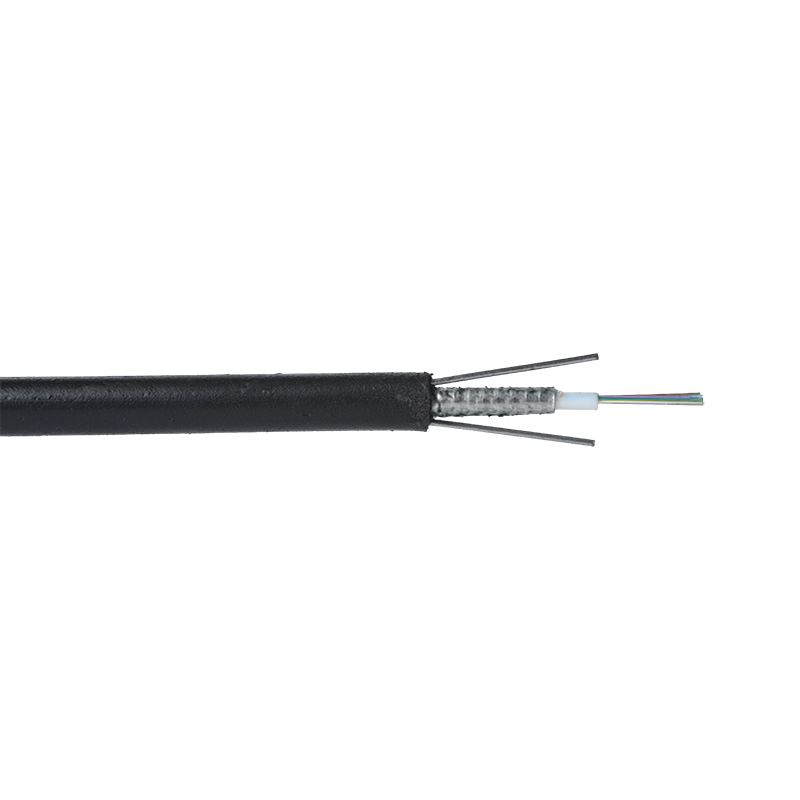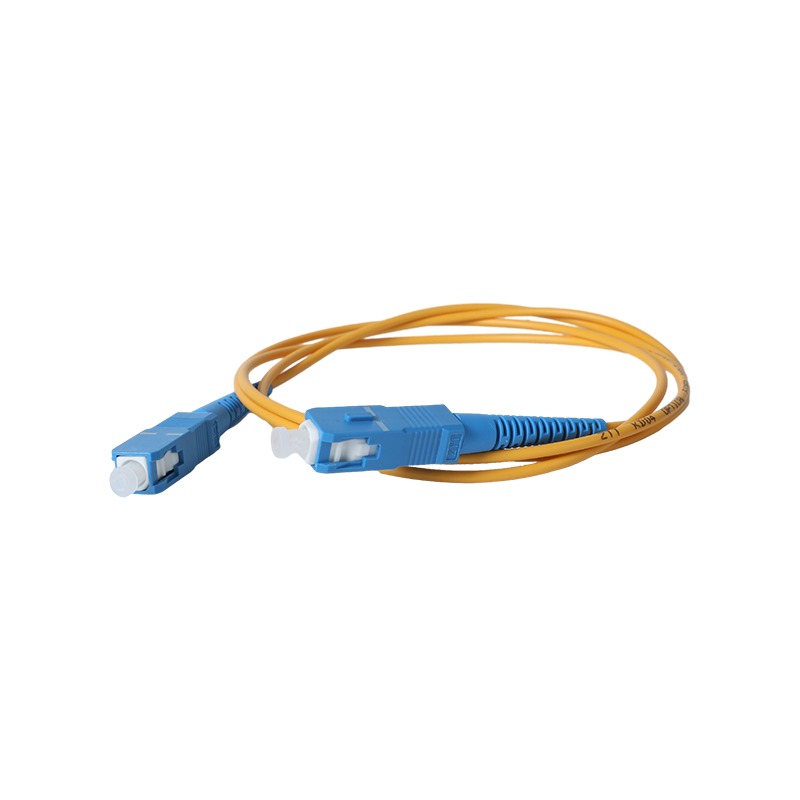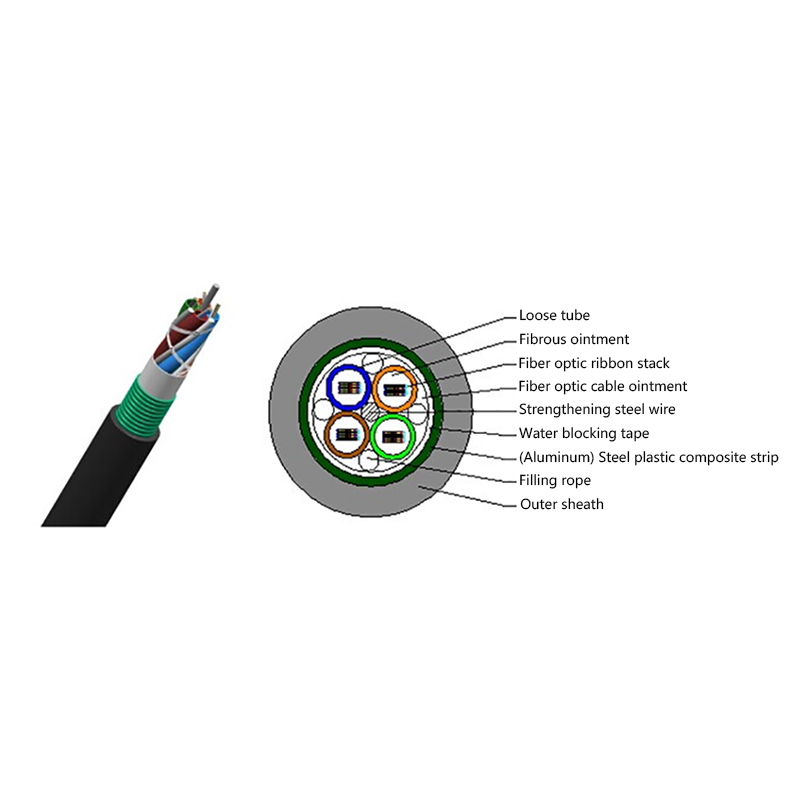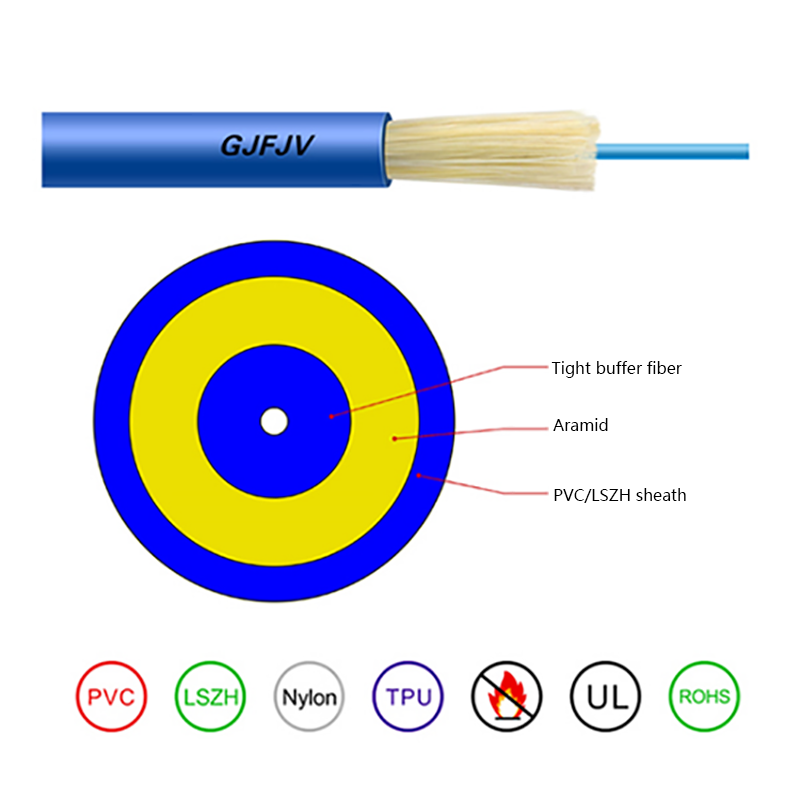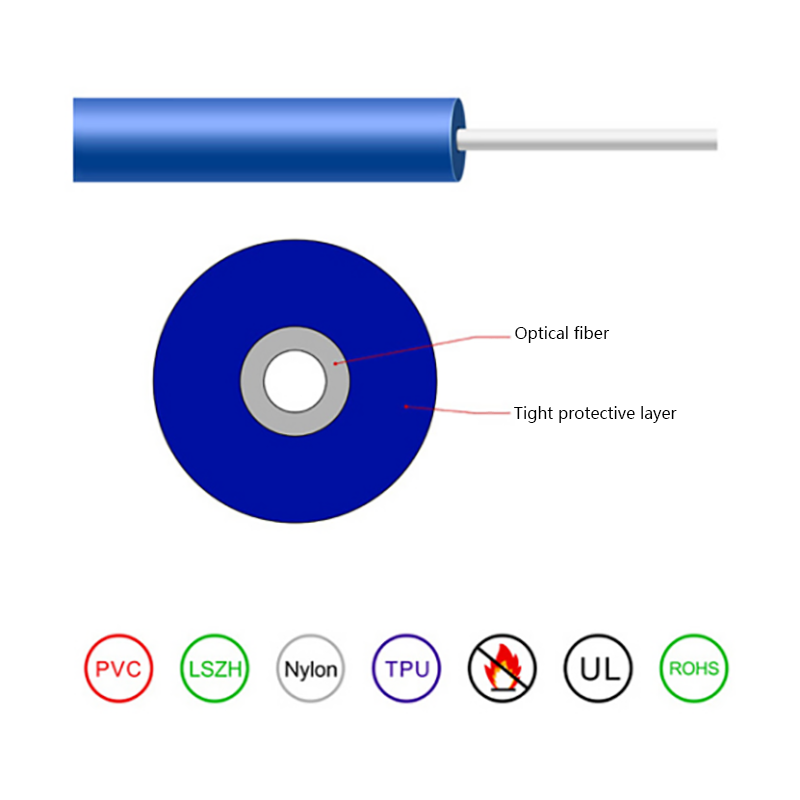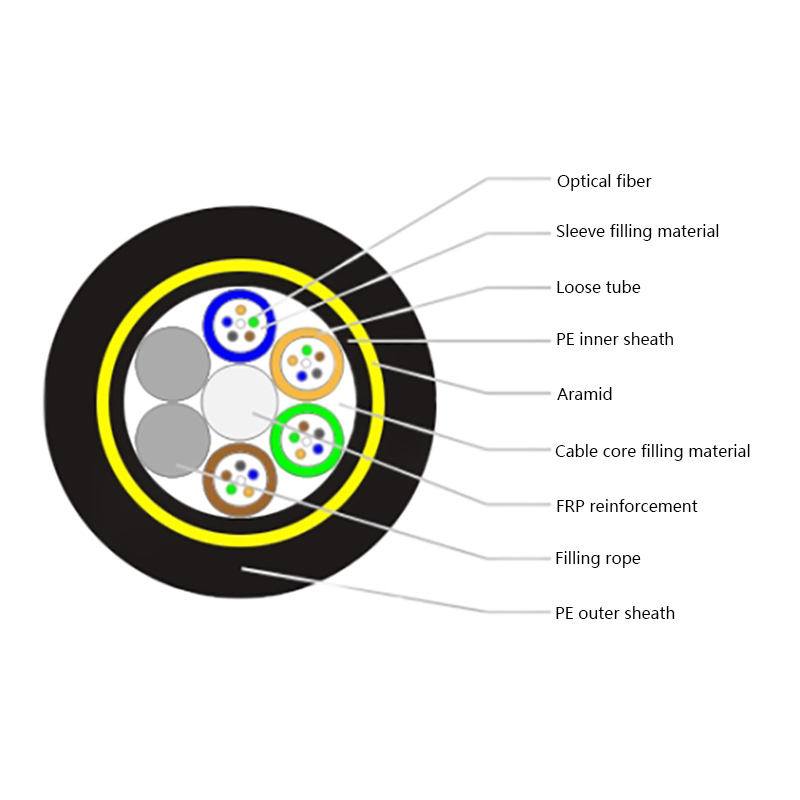What Are the Two Core Functions of Optical Ground Wire in Power Transmission Lines?
Beyond the Wire: How OPGW Protects and Connects the Grid
In the vast, silent landscapes that stretch between our cities, the towering sentinels of the electrical grid carry more than just power. Strung along the tops of these high-voltage transmission towers is a unique type of cable that serves a dual, mission-critical purpose. This cable is known as Optical Ground Wire, or OPGW. For engineers, grid operators, and telecommunications specialists, OPGW is a cornerstone of modern, reliable infrastructure. But for many, its full capabilities remain a mystery.
Core Function #1: The Protective Shield - Safeguarding the Power Line
The primary and traditional role of the wire strung at the top of a transmission tower is to function as a static shield wire or earth wire. Its job is to protect the energized phase conductors (the power-carrying wires) below from the most destructive force in nature: lightning. OPGW is, first and foremost, an exceptionally good ground wire.
Sub-Function 1A: Lightning Protection and Shielding
The Problem: When a lightning strike directly hits a phase conductor, it injects an enormous surge of current—often exceeding 100,000 amperes—in a fraction of a second. This surge vastly exceeds the line’s operating capacity, leading to catastrophic insulation failure, equipment damage, and immediate tripping of the circuit breaker, causing a power outage.
How OPGW Solves It: The OPGW cable is strategically positioned at the highest point on the tower, forming a “shield” over the phase conductors. It is designed to be the most likely point of contact for a lightning strike.
Intentional Attraction: Due to its height and grounding function, the OPGW effectively intercepts the lightning stroke before it can reach the critical phase conductors below.
Safe Current Path: Once struck, the robust metallic outer layers of the OPGW provide a low-impedance path for the lightning current to travel along the span of the cable.
Dissipation to Earth: At each transmission tower, the OPGW is electrically connected to the tower structure. The tower itself is connected to a grounding system—a network of rods and conductors buried in the earth. The massive lightning current is safely diverted down the tower and dissipated harmlessly into the ground.
The Practical Outcome: By sacrificing itself to the strike, the OPGW prevents the lightning’s destructive energy from reaching the live conductors, thereby preventing faults and maintaining the continuity of the power supply. Its design ensures it can withstand multiple such strikes without mechanical or electrical failure.
Sub-Function 1B: Grounding and Fault Current Carrying
The Problem: Beyond lightning, other events can cause faults on a power line, such as a tree falling on a conductor or equipment failure. When a live conductor contacts a grounded object (like the tower itself), it creates a “fault to ground.” This results in a massive, albeit slightly less instantaneous, surge of current known as fault current. This current must be safely routed to ground to allow protective relays to detect the fault and isolate the damaged section.
How OPGW Solves It: The OPGW forms a continuous, low-resistance electrical path along the entire length of the transmission line, connecting the grounding systems of every tower.
Creating a Common Ground Reference: This interconnected network ensures that all towers are held at a similar earth potential, which is crucial for the stability and correct operation of the power system’s protection schemes.
Carrying Fault Current: During a fault event, a significant portion of the fault current will flow through the OPGW and the tower structures back to the source. The OPGW is specifically designed with a specific short-circuit current rating (e.g., 50 kA for 1 second). This means its aluminum and steel layers are substantial enough to carry this enormous current for the brief period until the circuit breaker trips, without melting or sustaining damage.
The Practical Outcome: The OPGW ensures that during internal electrical faults, current has a safe, predictable path to ground. This allows protective devices to operate quickly and selectively, minimizing equipment damage and limiting the extent and duration of a power outage.
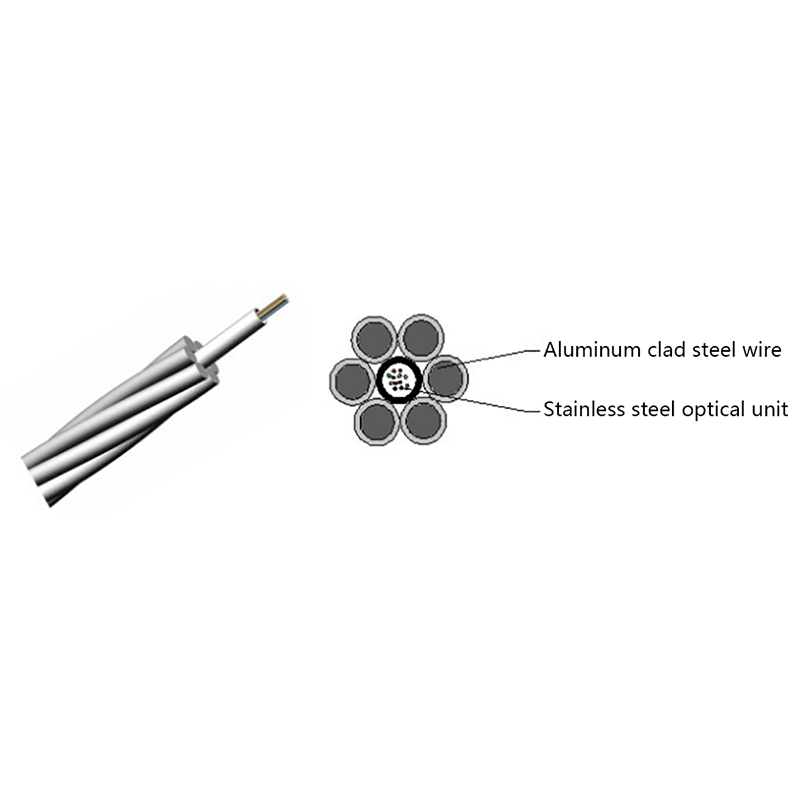
Core Function #2: The Digital Nervous System - Enabling Smart Grid Communications
While its protective role is fundamental, it is the second function that transforms OPGW from a simple wire into a strategic asset. Encased within its protective metallic shell are optical fibers, turning the cable into a high-performance telecommunications link.
Sub-Function 2A: The Physical Construction: A Cable Within a Cable
To understand how it works, you must understand how it’s built. An OPGW is not a simple mix of materials; it is a precisely engineered tubular structure.
The Central Core: At the very center is a stainless steel or aluminum tube. Inside this hermetically sealed tube are the optical fibers themselves, typically surrounded by a water-blocking gel to prevent moisture ingress and provide mechanical cushioning.
The Outer Layers: Surrounding this central tube are layers of aluminum and steel wires. These wires are stranded around the tube, providing the cable with its primary mechanical strength, current-carrying capacity, and resistance to corrosion. The specific combination of aluminum (for conductivity) and steel (for strength) can be tailored to the project’s requirements.
This construction is the key to its dual identity: the outer wires handle the electrical and mechanical duties, while the inner tube provides a safe, stable, and isolated environment for the fragile glass fibers.
Sub-Function 2B: Critical Applications in Grid Management and Control
The data capacity provided by the optical fibers is the backbone of the “Smart Grid.” It enables real-time monitoring, protection, and control that are impossible with older, leased telecommunications lines. Here are the most critical applications:
1. Power System Protection:
This is arguably the most important data function. “Pilot Protection” or “Differential Relaying” schemes require ultra-high-speed communication between the two ends of a transmission line. If a fault occurs in the middle of the line, relays at both ends must instantly compare the current flowing in and out. Using the OPGW fiber link, they can determine in milliseconds (often 1-2 cycles) that the fault is between them and trip both breakers simultaneously. Without this high-speed link, the relays would operate more slowly, causing greater system disturbance and potential equipment damage.
2. Supervisory Control and Data Acquisition (SCADA):
SCADA is the nervous system of the grid control center. The fibers in the OPGW carry vast amounts of real-time data from thousands of points on the grid—voltages, currents, power flows, circuit breaker statuses, and transformer tap positions—back to the control room. This allows operators to see the state of the entire grid in real-time and make informed decisions.
3. Wide-Area Monitoring and Control (WAMS):
Going beyond SCADA, WAMS uses synchronized phasor measurement units (PMUs). These devices, synchronized by GPS, provide a precise, time-stamped “snapshot” of the grid’s health 30-60 times per second. The high bandwidth and low latency of OPGW fibers are essential for transporting this massive data stream. This allows for the detection of grid oscillations and instability that would be invisible to conventional SCADA, helping to prevent widespread blackouts.
4. Asset Monitoring and Condition-Based Maintenance:
The fibers can also be used to monitor the health of the OPGW cable and the transmission line itself. Distributed Temperature Sensing (DTS) and Distributed Acoustic Sensing (DAS) use the fiber itself as a sensor. DTS can detect hotspots at splices or connections, while DAS can detect and locate conductor vibrations, galloping, or even potential interference like tree falls or unauthorized construction near the right-of-way.
5. Telecommunications for Utility Operations:
Beyond pure power system control, the fibers provide a reliable communication channel for everything else the utility needs: voice communication for maintenance crews, corporate data network traffic, and video surveillance for substation security.
The Synergistic Advantage: Why Two Functions Are Better Than One
The true genius of OPGW lies in the powerful synergy between its two core functions.
Optimal Use of Right-of-Way: Running a separate fiber optic cable on a transmission tower requires additional hardware, design considerations, and is susceptible to damage from the elements or wildlife. By integrating the fiber into the ground wire, utilities maximize the use of their existing, secured right-of-way without the need for additional permits or land acquisition.
Superior Fiber Security and Reliability: The OPGW provides a physically and electrically secure pathway for the fibers. Positioned at the top of the tower, they are largely inaccessible and protected from accidental damage, vandalism, and theft. Furthermore, the robust metallic sheath provides excellent immunity to electromagnetic interference (EMI), which is severe in a high-voltage environment. This results in a communication link with unparalleled reliability and data integrity.
Economic Efficiency: While the initial cost of OPGW is higher than a traditional ground wire, it eliminates the need to build, lease, or maintain a separate communication infrastructure. The “incremental cost” of adding the fiber functionality is minimal compared to the immense value of the data network it creates. It is a classic case of building smarter, not harder.
Conclusion: The Backbone of a Resilient and Intelligent Future
The Optical Ground Wire is far more than a simple wire; it is a multi-functional, mission-critical component of modern power transmission. Its first core function as a protective shield is foundational, providing the resilience needed to withstand nature’s fury and internal system faults. Its second core function as a digital nervous system is transformative, providing the high-speed, high-reliability data backbone that enables the situational awareness, rapid automation, and intelligent control required for the 21st-century power grid.
By understanding these two intertwined functions, one can appreciate why OPGW has become the technology of choice for utilities worldwide. It is a perfect example of elegant engineering: solving two fundamental challenges—protection and communication—with a single, synergistic solution that is robust, reliable, and ready for the future.



 English
English русский
русский Español
Español عربى
عربى 中文简体
中文简体


